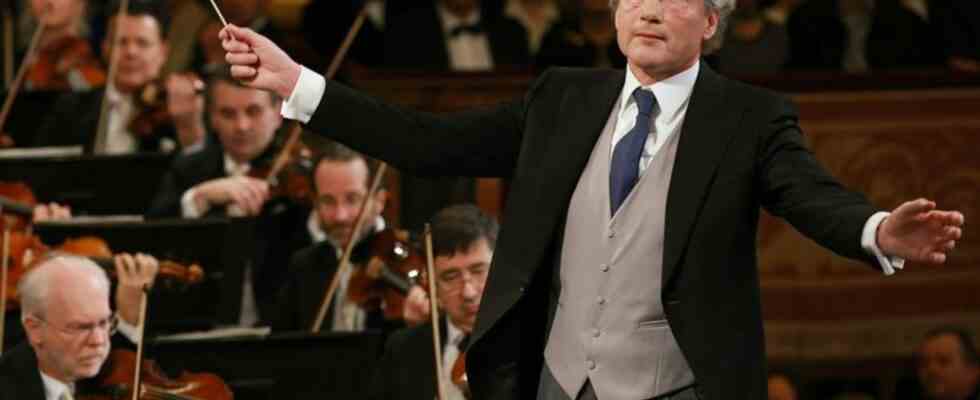turn of the year
A breath of fresh air at the New Year’s concert in Vienna
Conductor Franz Welser-Möst at the New Year’s concert of the Vienna Philharmonic. photo
© Dieter Nagl/VIENNA PHILHARMONIC/APA/dpa
At their New Year’s concert, the Vienna Philharmonic showed just how stimulating tradition can be. They presented a lot of new things and a girls premiere.
Despite an 80-year tradition, the Vienna Philharmonic pulled a lot of new things out of a hat at their world-famous New Year’s Concert. Although there is a major waltz and polka dance each year from the repertoire of the Strauss dynasty and their contemporaries, conductor Franz Welser-Möst presented 14 pieces that had never been played at the occasion.
The choir girls, the counterpart to the world-famous Vienna Boys’ Choir, were also there for the first time on New Year’s Day. Together, in sailor suits, they sang the polka “Heiterer Muth” by Josef Strauss from a gallery above the orchestra in front of an enthusiastic audience in the Golden Hall of the Wiener Musikverein. They also received applause from the orchestra. While for the boys’ choir aged 9 to 14 it was the prelude to the celebration of their 525th anniversary, the choir girls, who can be there from 8 to 15, have only existed since 2004.
Disruptive action by activists is thwarted
The police thwarted an unwanted premiere: They removed six climate activists from the building, who, according to a police spokeswoman, had probably planned a disruptive action there with superglue.
The pieces presented for the first time at the New Year’s Concert were largely penned by the brothers of the “Danube Waltz” composer Johann Strauss, Eduard (1835-1916) and Josef (1827-1870). Johann was also represented, for example with the Zigeunerbaron-Quadrille and the traditional encore “Donauwalzer”, but his big year will come in 2025: that will be his 200th birthday. The brothers’ father, Johann Strauss (1804-1849), couldn’t be left out either: his Radetzky March is also a must for the encores.
While the Philharmoniker write the brothers’ surnames in the program with “ß”, the men themselves usually wrote themselves with “ss”, as it is written on the grave inscriptions on the Vienna Central Cemetery initiated by the family.
To be seen live in around 100 countries
As always, the Vienna Philharmonic played in front of a worldwide audience: First, 1,700 guests had won one of the tickets, which cost up to 1,200 euros, in the main hall of the Musikverein by drawing lots. On the other hand, the concert was broadcast live in around 100 countries. It was the first concert since 2020 in front of a full house: In the first Corona year, the concert took place without an audience, last year only some of the seats were allowed to be occupied.
According to their own statements, the Philharmoniker want the concert to express the ideals of peace, humanity and reconciliation. The tradition of the New Year’s concerts began in a dark phase of Austrian history: the net proceeds from the first New Year’s concert on December 31, 1939 went to the National Socialist fundraising campaign “Kriegswinterhilfswerk”.
In 2024, Christian Thielemann, the German chief conductor of the Sächsische Staatskapelle, is scheduled to conduct the New Year’s concert.

